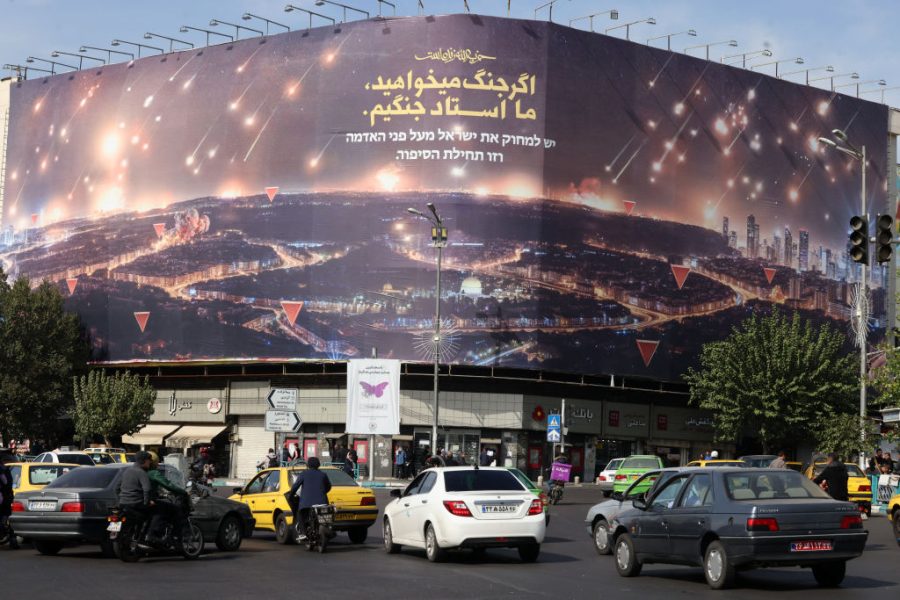On the night of 26 October, Israel conducted an aerial strike on Iran, marking the latest move in the ongoing tit-for-tat conflict between the two countries. The attack, which had been anticipated and was announced by the Israeli government, was in response to an earlier Iranian missile strike on Israel at the beginning of October, named Operation True Promise 2. The Iranian attack was itself a retaliation for Israel’s assassination of senior leaders within Hamas, Hezbollah, and the Iranian Revolutionary Guard over the preceding months.
Details of last night’s airstrike remain unclear, but reports suggest that Israel targeted approximately 20 Iranian military sites. Prior to it, there was speculation that Israel might expand its target list to include non-military infrastructure, particularly Iranian oil and nuclear facilities. However, it appears that these targets were not attacked, possibly due to pressure from the United States. The US had reportedly urged the Israeli government to keep the response limited in scope to avoid further escalation in the region.
It is unclear whether Iran will retaliate and continue the cycle of tit-for-tat exchanges with Israel
That said, the attack is unprecedented in many ways, marking the first time in several decades that Israel has conducted a large-scale and overt military strike against Iran, including against targets in the capital, Tehran. In contrast, Israel’s previous strike in April of this year was far more limited in scope, targeting a single air defence site near Isfahan in central Iran. According to Iranian reports, two Iranian soldiers died as the result of last night’s attack.
Importantly, during April’s strike, Israel did not publicly acknowledge the attack and Iran made efforts to conceal the damage, which helped to de-escalate tensions and stabilise the situation. This time, an Israeli Defence Forces spokesperson confirmed the airstrikes while the attack was still underway.
Early reports suggest that, among others, Iranian air defence capabilities and facilities of the Iranian Revolutionary Guard, as well as drone and missile production sites were targeted by Israel. For example, video imagery emerged showing damage to a supposed drone manufacturing facility in Shams Abad, southwest of Tehran. Additionally, satellite images confirm that a facility for producing solid-propellant rocket motors was targeted in the strike. The attack reportedly unfolded in several coordinated waves.
It is not yet known which Israeli weapon systems were used in the attack. During the strike in April, Israel employed several Rocks and/or Blue Sparrow air-launched ballistic missiles, launched from Syrian airspace. So far, no images of recovered booster sections have surfaced to confirm the use of this type of weapon system in last night’s attack.
There are unconfirmed reports that Israel employed F-35I stealth aircraft in the attack, potentially penetrating Iranian airspace. If confirmed, this would suggest that Israel not only used stand-off munitions but may have directly bombed targets from above. Such reports, if verified, would demonstrate Israel’s air dominance over Iran.
Iran deploys up to eight S-300PMU-2 fire units, which it bought from Moscow after the Iran nuclear deal was concluded in 2015. In principle, these air defence capabilities should be able to provide Iranian airspace with a reasonable level of protection. However, their performance in recent months has been underwhelming.
During the attack in April, Israel successfully destroyed the engagement radar of an S-300 fire unit, which failed to intercept the strike and defend itself. This time, another air defence system in southern Tehran may have been hit, failing to protect the capital. Unlike Iran’s missile strikes on Israel, which produced imagery of several confirmed Israeli intercepts, no video evidence has emerged showing what appear to be successful Iranian intercepts, despite claims to the contrary from Iranian officials.
Instead, several videos surfaced on social media showing anti-aircraft guns firing into the sky over Tehran. This type of uncoordinated gun-based fire is generally inaccurate and largely ineffective against most modern aerial threats. If Israeli F-35s were directly involved in the attack, they likely operated beyond the range of Iranian anti-aircraft cannons. On the other hand, if Israel used stand-off munitions like air-launched ballistic missiles instead, they would have been largely immune to such defences, as intercepting them with this type of air defence would require an exceptionally lucky shot.
It remains unclear whether Iran will retaliate and continue the cycle of tit-for-tat exchanges with Israel, especially given its struggling economy and the apparent vulnerabilities in its military. As such, Iran might choose to accept the relatively limited nature of the Israeli attack and move on. While it is unlikely that Iran would publicly rule out the possibility of retaliation, its officials have yet to make any public commitments to strike back.







Comments